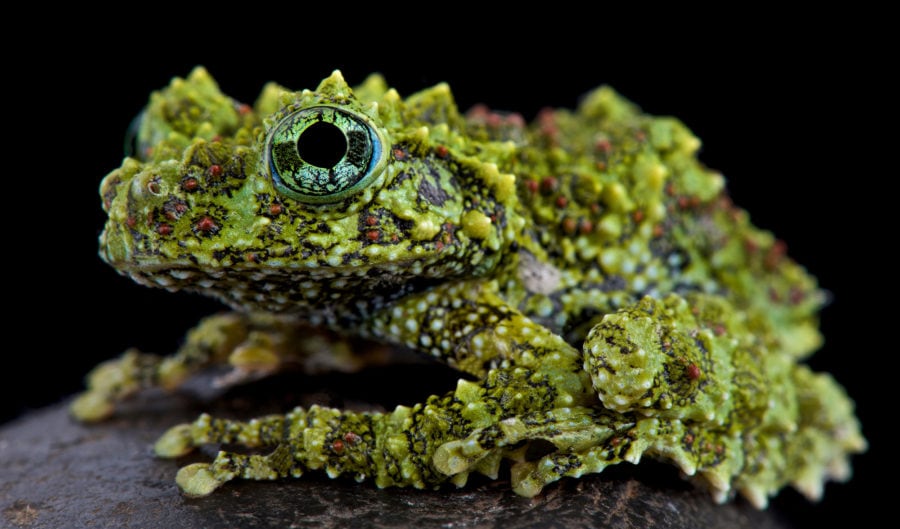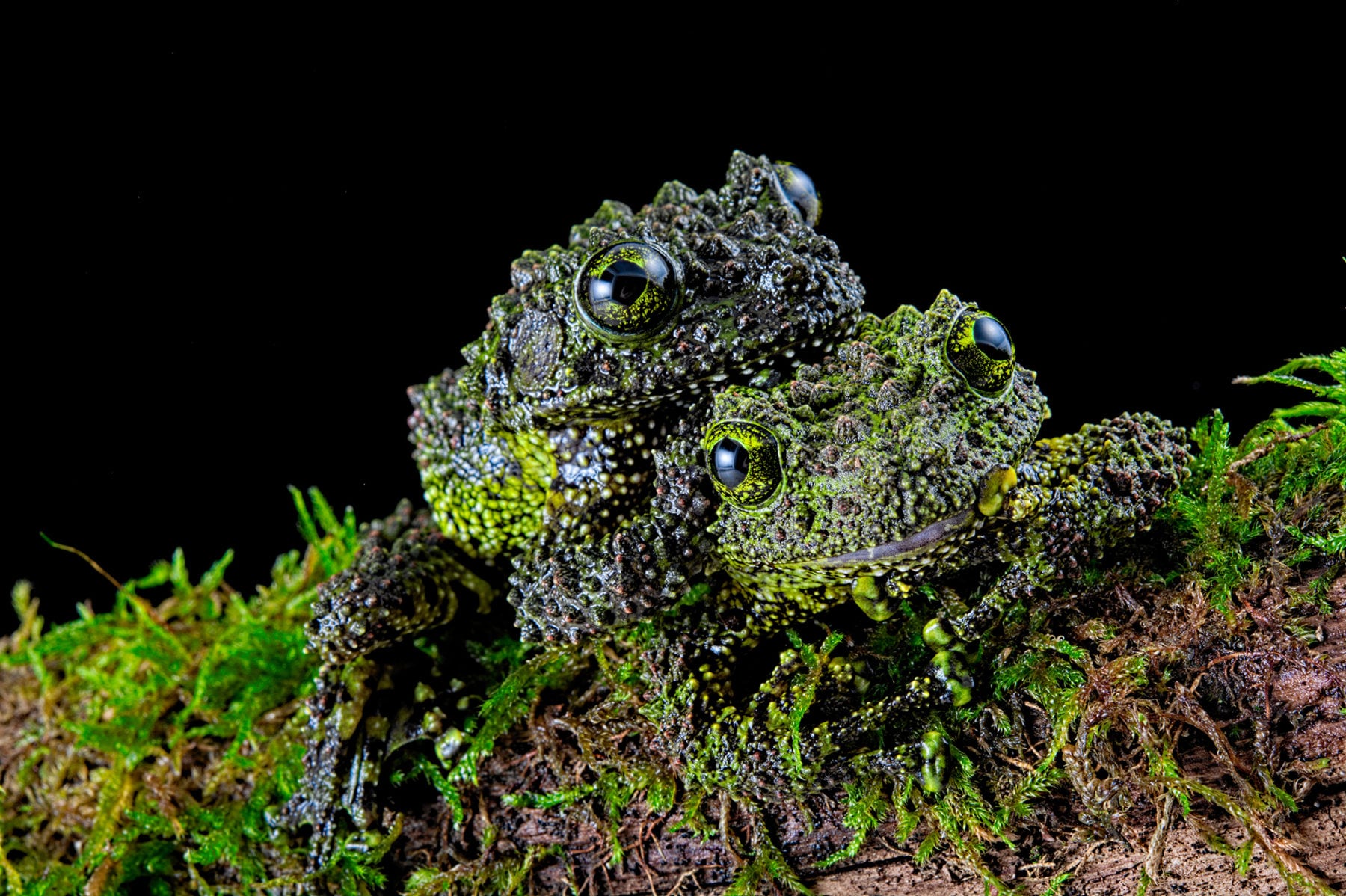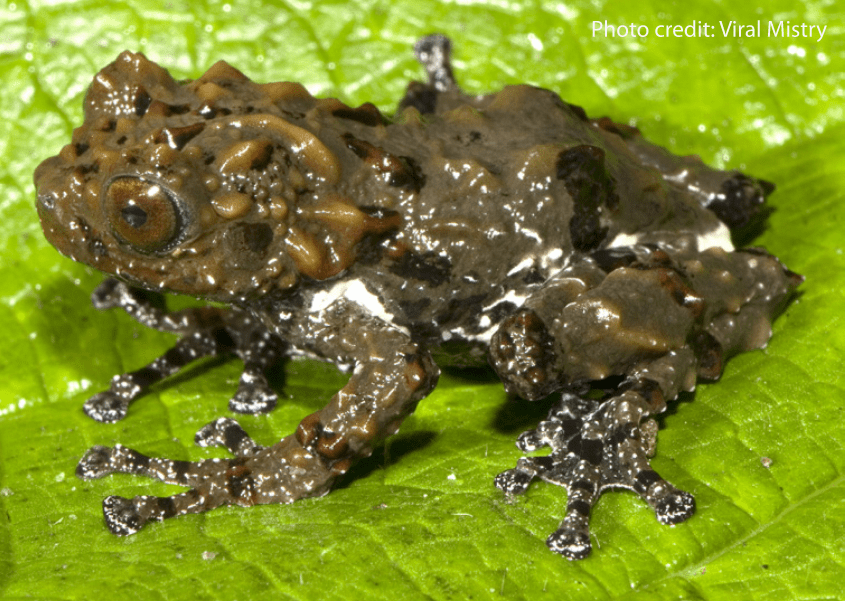The mossy frog is the sweetest thing

Bec Crew
Bec Crew

AT HOME IN the flooded caves of northern Vietnam and China, the mossy frog (Theloderma corticale) owes its survival to its brilliant camouflage.
With warty skin of green, brown, and the occasional red, this frog blends in with the mossy growths that are in abundance in some of the world’s richest evergreen rainforests. Even its eyes are patterned to help it blend in, that dark band running through the pupil helping to break up the brilliant green iris.
Also known as the Tonkin bug-eyed frog, the mossy frog can be very difficult to find in the wild. It’s a semi-aquatic species, and tends to submerge itself in the water, obscured by rocks and foliage, with only its eyes poking up above the surface.
When threatened, the mossy frog will curl itself up into a ball and play dead, hoping that whatever intended to eat them (most commonly a tree-dwelling mammal or snake) will be put off.
A member of the little-known Theloderma family of ‘bug-eyed’ frogs, the mossy frog’s closet relatives are found in north-eastern India, southern China, and throughout Southeast Asia.
They’re known for their wonderful camouflage, as you can see here, a couple of mossy frogs blending in with the moss:

And here’s the Assam Indonesian treefrog (Theloderma moloch), a vulnerable species that looks like, well, some freshly laid bird dropping:

You might have a tough time seeing a mossy frog, but hearing them shouldn’t be a problem – their calls can easily travel 3 or 4 metres, which makes tracking their location based on their voice no small feat.
Their calls are unusual; and really quite sweet, almost like a baby car alarm:
The good news is that, despite the clearing of their habitat and the bleak outlook for the world’s frogs in general, the mossy frog is doing alright for itself so far. It’s been classified as ‘of least concern,’ but its population is in decline.
You can see one up close in the video below, which really gives you a great sense of just how lumpy and bumpy these adorable little frogs are:

